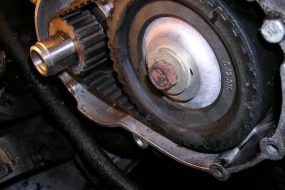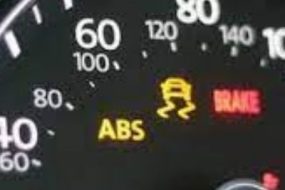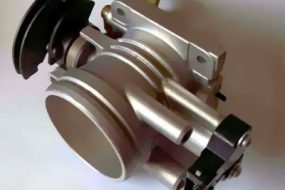
To give yourself a little more safe assurance, you have to use a seat belt. In all the states and countries of the world, the use of seat belts is strictly monitored, and drivers can be fined if they are caught not using a seatbelt in their vehicles.
Highway patrol officers are always on the lookout for drivers who don’t use seat belts, as these drivers are not only a danger to themselves but are also a danger to other road users.
Just like every other part of your vehicle, there are times when your seat belt buckle won’t latch for one reason or the other, and you must learn how to fix it because highway patrol officers won’t listen to excuses.
How to Fix a Seat Belt Buckle That Won’t Latch
Fixing a seat belt buckle that struggles with latching is one of the easiest fixes involving vehicles. When you find out that your seat belt buckle won’t latch, you don’t even have to go to a mechanic, you can do it yourself.
Here are the steps to take when you want to fix the latching of a seat belt buckle:
Step One: Get the Tools Ready
Before you start fixing your seatbelt buckle, you first need to get all the tools needed. The tools that you would need to fix your seat belt buckle are;
- A set of screwdrivers
- A knife; preferably a butter knife, or anything flat and sharpened
- Tweezers if you have one
- A lubricant, and
- Some alcohol you’d rub once you are done
Step Two: Examine the Seat Belt
The way you do this is by pulling it from the compartment completely to check whether there has been some form of tear, cut, or even something that has gummed itself to the belt.
If you find something of that sort, that might be the reason why your seat belt is not latching, or why the indicator on the dashboard is not properly indicating.
Step Three: Examine the Buckle
The seat belt consists of the female part and the male part. The female part is the buckle that is just beside the seats, while the male part is the tongue of the seat belt, at the tip of the belt.
It is this tongue that goes into the buckle and becomes latched together to keep drivers and passengers safe.
You have to check those two as well, as it could be that dirt or particles, as earlier said, might have gotten into the buckle, causing latch failure.
Step Four: Take Off the Buckle
This usually depends on the model of the vehicle.
There are some car models whose buckle you can work on without having to remove the car seat, and there are some that, without taking off the seat, it would be impossible to remove the buckle.
Once you have made out whether you need to remove the seats before you remove the buckle, go ahead and remove the buckle using a wrench, or socket set. If you are unsure of how to do that, consult the car’s manual.
Step Five: Dismantle the Buckle
This is the next step after removing the buckle. Usually, there is a socket on the edges of the buckle that you can open up or unscrew using the set of screwdrivers you have fetched at the onset.
Dismantle the buckle using the screwdriver and inspect every part of it. If particles are stuck inside it, all you need to do is use your knife, or whatever sharp, pointy object you have gotten to clear it out.
On the other hand, if it is that the springs of the buckle are rusty, you can use the lubricant to lubricate the spring area.
However, if the springs have broken, or you notice that the buckle cannot be fixed for any reason, here is the time that you need to get a new buckle.
Step Six: Couple the Buckle
If you are using the old buckle, couple it back and check the movement with the tongue of the seat belt before you screw it back into your car. This is to make sure that it is functioning properly and latching as appropriate.
Step Seven: Replace the Buckle
If you have decided that the old buckle is irredeemable, you have to buy a new one and replace the buckle you now have; the new one, or the repaired old one to the car, screw it back in and replace your seats if you have taken them out in the first place.
These are the step-by-step guides on how to fix a seat belt buckle that won’t latch. However, you are advised to always ensure to clean your seat belt and its buckle to ensure they are free from dirt.
What Causes a Seat Belt Buckle to Lock?
There are many reasons why a seat belt buckle might lock up and then cause the seat belt not to latch properly.
It could be that your vehicle has gone through something unusual, or a collision, or might even be that particles have gotten stuck inside it. Either way, here are some of the reasons why a seat belt buckle might lock:
The Seat Belt is Damaged
When your seat belt buckle locks, it could mean that the seat belt is damaged or faulty. The best thing to do here is to investigate.
Have it properly scrutinized, and if it is confirmed that it is damaged, you might need to replace the whole seat belt system.
You can check by trying to latch it and then see whether the indicator on your dashboard responds appropriately; that is, whether it turns on or off. If it doesn’t, this is an indication that there is something wrong.
The After-Effects of a Collision
Here is another reason why your seat belt buckle might lock. It could be a response to an accident, or when your vehicle has undergone a sudden force that it shouldn’t have.
Many times, a collision, or an accident causes a glitch in certain mechanical, and even electrical functions of your car, in this case, your seat belt buckle.
If your seat belt buckle has locked, or jammed, it could be an after-effect of a collision.
Overspeeding
Yes, you read right. Overspeeding can cause your seat belt buckle to lock. It is a system of protection for you, and so when your vehicle notice that your car is speeding more than the required miles per hour, it responds by locking.
Other people might call this ‘locking without any reason,’ but in truth, when you are overspeeding, your seat belt buckle has every reason to lock. It has one job; to protect you, and it will do its job, whatever it takes
How Do You Manually Unlock a Seat Belt?
Once the seat belt retractor is locked, all you need to fix it is your hands. You can either leave it affixed to your car or remove it when you want to fix it, whichever one is more convenient.
If you have removed it, you have to hold the belt as it would have been if it was still affixed to your car.
Pull it gently until you feel it reeling itself, then allow at least half of the belt to reel back into the retractor as slowly as possible, and then you pull it out slowly too. This will automatically unlock the seat belt retractor.
Many times, you have to do this over and over again until it gets unlocked, but this is the way it is done. All it requires are your hands and patience.
Pros of Fixing a Seat Belt Buckle that Won’t Latch
- Safety: When you fix a seat belt buckle that won’t latch, you are guaranteed more safety in your vehicle, especially when you get into an accident or a sudden collision.
- Abiding by the Law: You abide by the law when you use your seat belt, and the only way you can use your seat belt is if it is functioning properly. Fixing your seat belt will give you the edge to use it and stay within the law.
- It Saves You From Getting Fined: It saves you from getting ticketed by highway patrol officers who will uphold the law and get you fined, or worse still, you may be arrested for not using your seat belt.
Conclusion
It is extremely easy to fix your seat belt buckle whenever you find that the seat belt tongue is not latching to the buckle.
Once you have this problem, follow the steps above to fix the problem as soon as you can, because it not only keeps you safe, it also makes you a law-abiding citizen.









